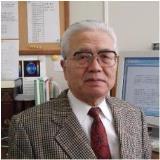
Toshimitsu Musha
University of Tsukuba, Japan
Title: New System NAT(Neuronal Activity Topography) for Assisting Differential Diagnosis of Dementia
Biography
Biography: Toshimitsu Musha
Abstract
The EEG signals are recorded for five minutes with 21 electrodes and analyzed via the Internet. From the normalized power spectrum of each of the recorded signals, the normalized power spectrum NPSj,m is derived referring to signal channel j and frequency bin mf0 where m is an integer and f0 (=1.56Hz) which equals an inverse of the signal segment length 0.64 sec. A pair of markers, sNAT and vNAT which have 210 sub-markers each, is derived for characterizing EEG power partitions across the 10 frequency bins and power ratios between the adjacent frequency bins, respectively. The likelihood between the template markers and a pair of markers of an unknown subject derives information of differential diagnosis concerning several dementias. The NAT pattern of a patient gives us information about the local cerebral impairment. Severity of the impairment can be on a differential-likelihood diagram, and this diagram enables detection of dementia in the early stage. VCI and DLB can be separated from the normal control (NL) at 90ï¾95%, and AD from NL at 80%. Moreover, improvement of impaired cerebral activities can be numerically monitored after a proper intervention. NAT will serve to prevent the increase of demented senior population wherever the internet system is available.
